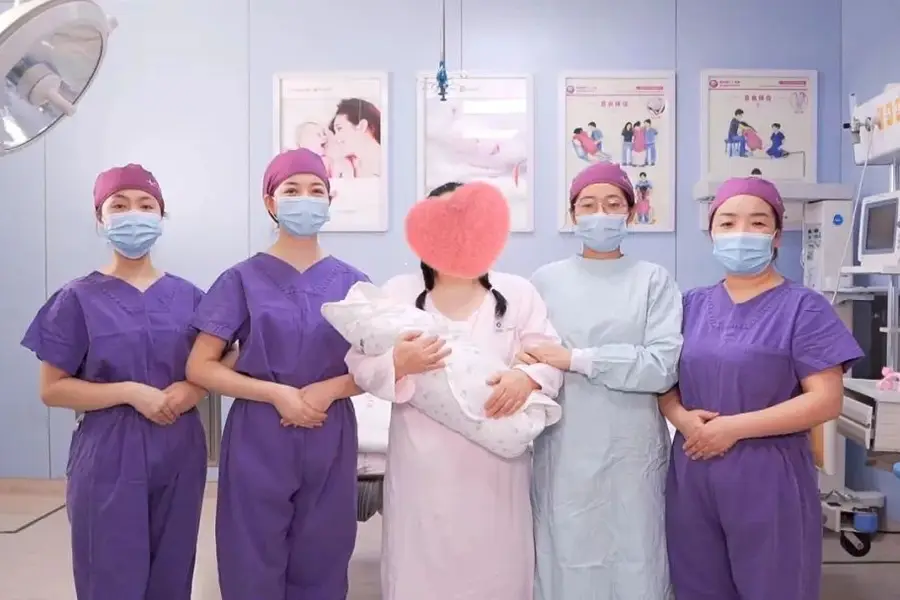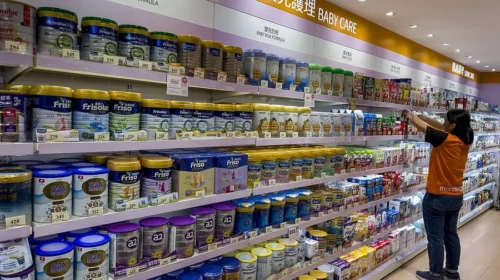Falling global birth rates drag Jinxin into the red

The fertility services provider lost up to 1 billion yuan in the first half of this year after taking large impairment charges on its U.S. and Laotian operations
Key Takeaways:
- Jinxin lost up to 1 billion yuan in the first half of 2025, primarily on impairment charges related to businesses it acquired in the U.S. and Laos
- The charges suggest the fertility services provider’s U.S. and Laotian units are underperforming expectations amid globally declining birth rates
By Warren Yang
Birth rates keep falling globally, and that appears to be a growing problem for Jinxin Fertility Group Ltd. (1951.HK).
The company, which provides assisted reproductive services, warned last Friday that it plunged into the red this year, swinging to a loss of up to 1 billion yuan ($139 million) in the first six months of 2025 from a net profit of 190 million yuan a year earlier. The update is based on preliminary estimates, with Jinxin set to report final results on or around Aug. 25.
Jinxin blamed its sharp reversal mostly on provision charges for impairments of intangibles like goodwill and financial assets related to its businesses in the U.S. and Laos. While it didn’t provide further details about what’s happening in those markets, the actions indicate that its operations in both countries, obtained through previous acquisitions, aren’t doing so well. In effect, such accounting treatment typically becomes necessary when acquired companies perform below expectation.
Jinxin’s revenue growth is slowing as birth rates in China and beyond are falling – a trend with major implications for a company whose main business is catering to people who want to have children. The global total fertility rate, or the average number of children born to each woman, is projected to drop below the 2.1 mark by around 2050, lower than the level generally considered the minimum for developed countries to maintain their populations.
A deteriorating outlook for the broader global economy amid ongoing trade tensions also doesn’t bode well for costly services like fertility treatments, since more couples may tighten their budgets to avoid such fees. Many couples might also increasingly shudder at the large longer-term expenses of raising a family.
For acquisitive companies like Jinxin, goodwill can be extra financial baggage that adds to the operational challenges it faces in an increasingly difficult business environment. When a company makes an acquisition and pays more than the fair value of the acquired company’s assets, the acquirer records the difference as goodwill on its balance sheet. Going forward, it regularly assesses whether the goodwill has been impaired, based on financial projections for the acquired subsidiary. If the company believes an impairment has occurred, it marks down the goodwill on its balance sheet, which reduces the total amount of its assets, and sets aside a matching provision in its income statement that erodes its profit.
Jinxin’s primary asset in the U.S. is HRC Fertility Management, which it acquired in 2018 and operates a network of clinics in California. The company periodically assesses the values of goodwill from the acquisition and now appears to believe it paid more for HRC than it previously estimated.
Impairment testing
To make such calculations, Jinxin typically uses cash flow projections for HRC, based on the rate of its revenue growth and its gross profit margin – an exercise called “impairment testing.” When Jinxin thinks any of those metrics will fall short of its earlier assumptions, it bites the bullet and takes an impairment charge. Last year, the company didn’t book any impairment loss for HRC, putting the total carrying value of goodwill for its U.S. operations and their other intangible assets at about 3.8 billion yuan.
In Laos, Jinxin acquired Jinrui Medical Center in 2020. That deal didn’t involve any goodwill, but the unit has an intangible asset in the form of a medical practice license, worth about 40 million yuan at the end of last year.
The fact that Jixin is flagging a substantial net loss means that its impairment charges — most of which likely stem from its U.S. operations — probably erased most of its revenue for the first half of this year. It also implies there’s a wide gap between the company’s original cash flow forecasts for its U.S. subsidiary and its most recent expectations after the latest reality check.
Jinxin’s overall revenue increased less than 1% last year to 2.8 billion yuan, down sharply from a nearly 18% increase in 2023. Worse yet, its gross and net profits both shrank last year. Its revenue decreased in China, which remains its main market, with the number of treatment cycles falling despite Beijing’s efforts to reverse the country’s declining birth rate.
Jinxin is getting at least a little help in China from the government, since some cities and provinces — including Chengdu, the company’s biggest domestic market — are covering costs for fertility services under the national health insurance plan. In its annual report, Jinxin explained that the number of treatment cycles in China fell last year because some potential patients waited for the inclusion of certain treatments in the reimbursement program late in the year. But general reluctance to have children among young couples, particularly in China’s current weak economic environment, may have played a bigger, more fundamental role in Jinxin’s weak revenue growth.
In the Friday disclosure, Jinxin also said its CEO Dong Yang will be the company’s acting CFO, which seems to suggest that former CFO Huang Hanmei left that position less than two years after being appointed. While no reason was given for Huang’s departure, the seemingly sudden CFO change and profit warning don’t exactly look too good for the company.
Jinxin shares dropped almost 7% on Monday, the first trading day after the announcement, though they bounced back a little the following day. They still trade at a price-to-earnings (P/E) ratio of 27 and a price-to-sales (P/S) ratio of 2.6. Those multiples look decent compared to a P/E ratio of 16 and a P/S of 2 for oncology specialist Hygeia Healthcare (6078.HK), or a meager P/S ratio of 0.3 for hospital operator Guangdong Kanghua Healthcare (3689.HK), among other peers in the broad medical sector.
Even so, Jinxin’s stock has lost almost two thirds of its value since the company’s IPO in 2019. Current demographic trends are certainly working against the company, which means upside for the stock could be limited as long as it remains on its current course.
To subscribe to Bamboo Works weekly free newsletter, click here





